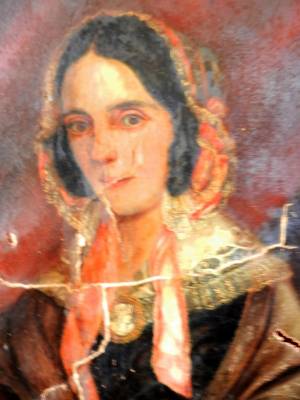This is an old revision of the document!
Back to England
Thomas Murray Prior/Thomas Prior, 1 August 1790-July 1864
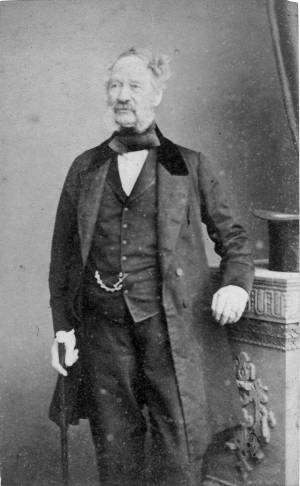 This photo is from TLM-P’s photo album and labelled by him as ‘Colonel Murray-Prior’. It was taken by Symonds Photographer who operated from the Isle of Wight and Portsmouth, near where this 2nd Thomas Murray Prior lived.1)
This photo is from TLM-P’s photo album and labelled by him as ‘Colonel Murray-Prior’. It was taken by Symonds Photographer who operated from the Isle of Wight and Portsmouth, near where this 2nd Thomas Murray Prior lived.1)
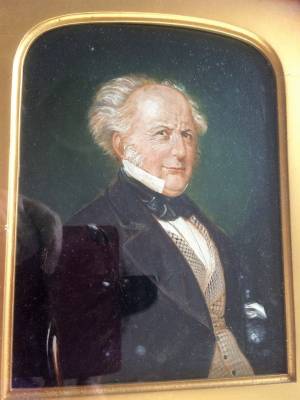 Is this portrait - almost a caricature - of Thomas MP or someone else from the same era? 2)
Is this portrait - almost a caricature - of Thomas MP or someone else from the same era? 2)
For another mystery - click on MLphoto
This Thomas Murray Prior, the eldest son of Thomas and Catherine Murray Prior, treated the 'Murray' part of his surname as a given name, and usually called himself Thomas Prior.3)
He was born in 17904) when his father was 17 years old, indicating that his parents eloped when very young. His mother's family relented enough for her to go to her parent's place at Cuffsborough (Country Laois, Ireland) for the birth.5) It is presumed by then that his father had lost the family's Rathdowney estate (and with it, claim to gentry status) though in 1888 his eldest daughter Jemima was apparently pursuing (presumably unsuccessfully) a claim on the Irish estate.6)
With no income from an estate, this Thomas had to find another way to earn his living. He did so by leaving Ireland and joining the British army. He never permanently returned, understandably given that the power of the Anglo-Irish ascendancy was fast declining. His last home was in southern England, at Windsor Terrace, Southsea, Hampshire; before that he lived at Elliott Place in Gosport.7) Both he and his second wife were buried at Southsea cemetery.8) Their son visited their lately refurbished grave in 1882 and described it. 9) Thomas died in July 1864, on the 12th or 19th.10) TLM-P, the focus of this history, was his elder son: the letter informing him of his father's death took two months to reach him.11).
There is evidence that this Thomas did not adjust well to his family's failing fortunes, living as if he had a much higher discretionary income and expecting his wife to manage. In his brief memoir about emigrating to Australia, TLM-P described his father's spendthrift attitude:
“My father, being an Irishman of the old school, had no idea of the value of money. My mother therefore always hastened to take possession of his pay or dividends when due, before he had had time to barter for an oil painting or a piece of cracked china, the cash which was to provide the daily bread for the household till further supplies fell in.”12) It is unsurprising when Louisa offered her brother some of their father's whiskey that she'd kept after his death, that the quality was 'very good'.13)
Despite such differing attitudes to money, and Thomas's continuing purchases of the finer things in life regardless of income, the marriage appears a loving one. One token is this lock of Thomas' hair with a note, ‘My dear Husband’s hair cut Jan'y 23rd 1832 - the day before he left for Ireland. E. Prior.’
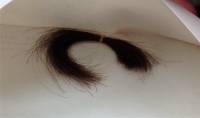 14)
14)
Army Career
Young men had one great career opportunity in the early 1800s: joining the British army or navy. Career prospects were high due to the inflated numbers of military personnel needed for the prolonged war against Napoleon Bonaparte. Prospects particularly opened up for the sons of the gentry to become officers because, as the war increased the risk of death or disability, the number of aristocrats joining up dropped by 20 per cent. The key problem was that, in cavalry and infantry regiments, traditionally rank up to that of Colonel was by purchase. With the need for more officers, that system began to break down and the majority of commissions granted during the Peninsula War were obtained without purchase. The practice was uneven with purchases occurring most in the more elite regiments of the Cavalry and Foot Guards.15)
When Thomas was 13 years old, he entered the army as a Cornet, the lowest rank of commissioned officers in the cavalry. His daughter Jemima later related that his father (Col. Prior) 'sent a big Irishman with him as sort of henchman, and the Col. said he had better have brought a nurse.'16) One influence was that his uncle Lodge was also a cavalry officer. Officers had an army rank (the basis of their pay) and a regimental rank. Thomas’s copy of A List of all the Officers of the Army and Royal Marines on Full and half-Pay (published 13 March 1815) p.133 records his army rank from 1805 being that of Lieutenant.17) He obtained a regimental (Brevet) rank of Colonel in 1859 when he was 64 years old, after 51 years in the army. He died six years later.
Click **here** for more details of his army career and Peninsula War experience.
As seen in the above link, Thomas Prior took part in the Battle of Waterloo which marked Napoleon's defeat. That battle also marked the decline in his career prospects. The army was reduced by a staggering 232,000 men; the navy by 124,000 men. They were put on half-pay but that pay was low, fixed at 1794 levels. Many seized the opportunity to emigrate to NSW and Van Dieman's Land, enticed by offers of land grants, a freer life and warmer climate.18) While not all were successful, ex-officers who had fought in the Peninsula War formed an influential and prosperous network in Australia.19) Perhaps because he had a wife and children, Thomas Prior did not join his fellow officers and emigrate. Did he regret staying in Britain? Was an awareness of lost opportunities behind his teenage son's decision to migrate?
Portraits
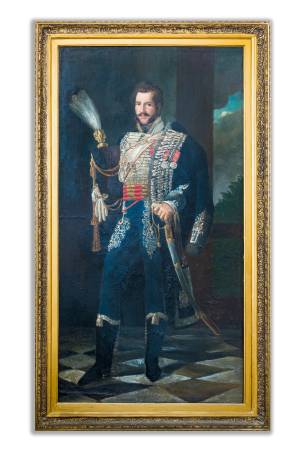 The family has a number of paintings of this Thomas Prior. The one shown here is the most gorgeous of them all!20) It shows him in dress uniform. It presumably is the painting described in TLM-P's will as 'one portrait of my Father in regimentals of the Eighteenth Hussars'.21) One of the medals is the Waterloo medal for those who fought in that momentous battle.
The family has a number of paintings of this Thomas Prior. The one shown here is the most gorgeous of them all!20) It shows him in dress uniform. It presumably is the painting described in TLM-P's will as 'one portrait of my Father in regimentals of the Eighteenth Hussars'.21) One of the medals is the Waterloo medal for those who fought in that momentous battle.
For other portraits, click on **portraits Thomas Prior**.
Military items
A number of swords most likely belonging to this Thomas Prior or his immediate family have survived, along with other items. They were used in combat, at least up until the end of the Napoleonic Wars. For more on these click **army gear**.
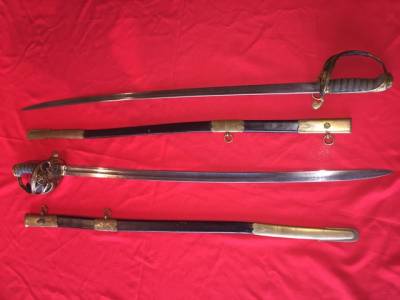 Some Murray-Prior swords.22)
Some Murray-Prior swords.22)
Books
It can be a matter of serendipity what books survive - and some of those the owner most treasured may well be deemed too battered to keep by his or her heirs. The books the family owns that belonged to this Thomas Murray-Prior were mainly those required in the army or for the expected church attendance. For more, click on **books**.
Thomas Prior in Australia
According to his son TLM-P, Thomas Prior visited Queensland for two years.23) His land purchases suggest that he came out, not just to see his son, but to buy land in the up-an-coming settlement. Kerry Heckenberg24) detailed that Thomas and his wife arrived in Sydney on 16 November 1852 on board the Vimeira, departing four days later for Moreton Bay on the steamer Eagle. The passenger list shows 'Major and Mrs Prior' arriving as indicated by Heckenberg.25) They apparently lived in Brisbane during 1852–54. Heckenberg references a list of those eligible to vote in August 1854 which includes Thomas Prior of Eagle Street, Brisbane.26) Thomas Prior purchased land in July 1853 and February 1854 at Cleveland, spending over £215. Residency for a period of time visit was presumably necessary to qualify him to do so using a remission order allowed him as an army officer.27) These orders were designed to encourage the numerous British army officers who had no active role since the defeat of Napoleon, to settle in the Australian colonies.
Heckenberg argues that, based on Rosa Praed's recollections, that they probably bought their art collection with them to give to TLM-P. He in turn gave a number of them to be the founding collection of the new Queensland Art Gallery while keeping the family portraits. It makes sense that his parents did this, especially given that TLM-P's only brother had died and neither of his sisters married, and that transport was relatively cheap as sailing ships needed ballast for stability. If Rosa's memory is correct, then at least some of the paintings were transported without frames.
The visit was only vaguely remembered by his descendants. His grandson Robert wrote that his grandfather Thomas had visited Queensland ‘briefly’, but gave no detail.28) His granddaughter Rosa Praed, wrote that she recalled one of her grandmother's trunks with the information on its side, 'that Colonel Thomas Murray-Prior had taken passage in the Roxburgh Castle from Southampton, England, for Bungroopim Station, Logan River, Brisbane Water, Moreton Bay, Australia'. The Roxburgh Castle was the ship her father had sailed in when he first emigrated in 1838, and it is more likely that, especially given Thomas did not use Murray-Prior as his name, that (as was common) Rosa's memory had let her down. Her memoir was, after all, published in 1902, when she could no longer check with her grandparents or parents. The same scepticism applies to Rosa's recollection of her grandmother Eliza as 'an awesome figure' who taught her to read. As Eliza M-P left the colony just after Rosa turned three, it is improbable so say the least.29)
Andrew Darbyshire, A Fair Slice of St Lucia provides evidence about Thomas Prior's time in Queensland. He shows that ‘T. Prior’ selected land at Prior’s Pocket [Road] Moggill ‘in the early 1850’s and purchased land in Cleveland, supported by a map and letter from the Surveyor’s Letterbook (both courtesy Queensland State Archives) dated 25 October 1853, that ‘Major Prior has applied to purchase’ the allotments at Prior’s Pocket and also bought land at Cleveland (both in Brisbane area). TLM-P also bought land at Moggill 30), in 1850 as well as considerable land in St Lucia. Darbyshire explains that TLM-P's father ‘purchased this and other land at Cleveland using a Remission Order allowed him as an officer in HM Regiment’31) According to Darbyshire, between July 1853 and February 1854, Thomas Prior bought six properties for a total of £215.16.11 (around $17,000 in 2107 values) paid mainly from a remittance order given him as a military officer on half pay.32)
'Major Prior'/'Thomas Prior Esq' was appointing the returning officer on 11 April 1854 for the election for the County of Stanley for the NSW Legislative Council (Queensland was part of NSW until 1859).33) He resigned from the position in 1854, presumably to return to England.34) Andrew Darbyshire's last note of him as a returning officer is for an election that had to be re-contested due to Thomas Prior's 'inexperience', with results released on 12 August 1854.35)
Nehemiah Bartley in his Australian Pioneers and Reminiscences 1849-1894: together with portraits of some of the founders of Australia36) stated that TLM-P's 'father, Colonel Prior, was a genial Irishman, and the inevitable returning officer and chairman of hospital37) and similar election meetings in the infant days of Brisbane' due to his 'tact and good temper'.38) Bartley's reminiscences was published in 1896 and he knew TLM-P, so his information has some authority. The description of TLM-P's father as a 'genial Irishman', fits in with TLM-P's description of his somewhat spendthrift and irresponsible father. The army rank indicates that he used his highest Brevet rank, that of Major, rather than his subsequent rank of Captain on half-pay. The 'Colonel' is explained by his having been promoted to Brevet Lieutenant-Colonel in June 1854.39)
Isobel Hannah states that, when in Brisbane, Colonel Prior 'lived in a pleasant spot on the river, where is now [1953] situated [St Joseph's] Junior Nudgee College.'40)
Thomas Prior's visit was a private one, and not as part of the army. In the 1850s, he was in the 5th Regiment of Foot: it was never posted to Australia. Two companies of the Regiment went to India, but not until 1857, so it was not the case of Thomas Prior taking leave from India to visit his son in Queensland in 1854.41)
Two Wives, Two Daughters and Two (surviving) Sons
Summary:
| Thomas Prior | m (1) Jemima Dickson | Jemima and Louisa | and William Amhurst |
| m (2) Eliza Skynner | and had two sons: TLM-P (the focus of this history) and William. |
As seen when clicking on these links, Thomas Prior's first wife Jemima suffered the usual fate of so many women: three births in three years soon after marriage, then dying leaving infant children motherless. Perhaps it is not surprising that her two surviving daughters, Jemima and Louisa, remained single.
Eliza Skynner was luckier, though she suffered the early death of her talented artist son William, and her other son TLM-P emigrated to the other side of the world when he was just 20 years old. Thomas Prior's second marriage was hasty, but the children successfully blended into one family. For numerous evidence of their lasting affection, click on successful blended family.
There was also a possibility of a third marriage for the widower. His son noted in his diary in 1882 that he and his sister Jemima visited 'Mrs Smith, a fine old lady of about 80. Before the Fathers death, Jemima was getting up a match between the old people and 20 years ago Mrs S. must have been a handsome woman. She … appears a cheerful body … seemed pleased we had called and had tears in her eyes at old remembrances. The old man would have had a comfortable home and pleasant companion with good means.'42)
Eliza Portraits?
The family has inherited from TLM-P, three painting showing the same woman in the same dress. It makes sense that the woman is his mother Eliza.
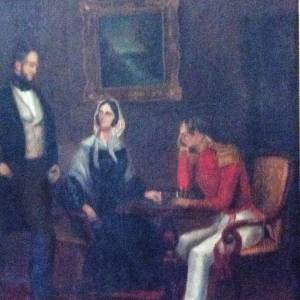 This faded painting43) shows - who? Perhaps Eliza and her two sons?
This faded painting43) shows - who? Perhaps Eliza and her two sons?
Is this too a painting of Eliza? 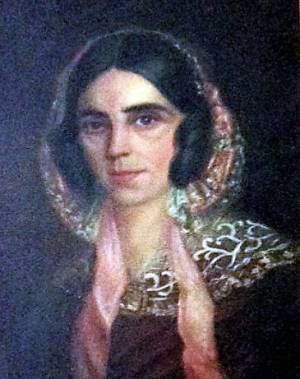 44)
44)
The last portrait is a larger (920 x 640cm) version of the one above.45) This one was damaged by removalists in c.1960s, and has since incurred further damage. 